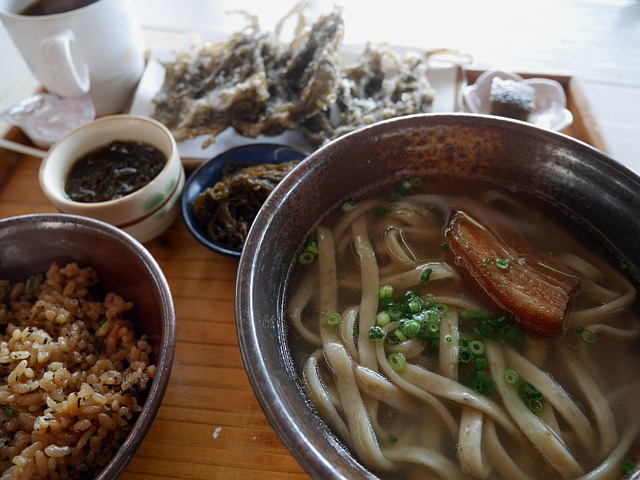
There is something magical about the island of Okinawa. It’s not just the crystal-clear waters or the beautiful mountainous landscapes, but also the charm and warmth of its people. They are known for their longevity and vitality, and it’s a well-known fact that Okinawa has the highest proportion of centenarians per capita in the world.
The Okinawan culture is a beautiful blend of Japanese and Chinese influences, creating a unique identity of its own. One of the most striking features of Okinawan culture is their traditional dance, which is called “eisa.” This dance is performed during festivals and involves vibrant movements and colorful costumes that embody the spirit of the Okinawan people.
Another aspect of Okinawan culture that is worth mentioning is their cuisine. They use unique ingredients that are not typically found in other Japanese cuisine, such as Okinawan sweet potatoes, goya (bitter melon), and sea grapes. Okinawan cuisine is often described as healthy and delicious, reflecting the island’s connection to nature.
Importance of Regional Cuisine in Okinawa
In the enchanting land of Okinawa, where tradition meets innovation, the regional cuisine reigns supreme as an integral part of the island’s cultural fabric. The importance placed on their local food goes far beyond mere sustenance – it is a testament to their unique identity and a celebration of their rich history.
Okinawan cuisine holds a special place in the hearts of its people, for it not only tantalizes the taste buds but also serves as a direct link to their ancestors. Passed down through generations, the recipes are cherished treasures, preserving the flavors of the past and sharing them with the present.
With every bite, the Okinawan people pay homage to their ancestors, honoring their traditions and perpetuating a culinary heritage that holds a mirror to their very essence. Whether you indulge in a bowl of simmered pork belly, savor the delicate flavors of fresh sea bream, or embark on an adventure through their vibrant array of pickled delicacies, Okinawan cuisine offers an authentic experience that is both nourishing and soul-stirring.
In Okinawa, regional cuisine is not just a meal. It is a gateway to a world where tradition thrives, and the essence of the island is preserved in every bite.
History and Influences
The history of Okinawan cuisine is as rich and diverse as the island itself. With a unique blend of influences from China, Japan, Southeast Asia, and even the United States, Okinawan culinary traditions reflect the island’s vibrant past. Okinawan cuisine has evolved over centuries, shaped by trade, cultural exchanges, and the availability of local ingredients.
Cultural Influences on Okinawan Regional Dishes
Chinese Influence: One of the most significant influences on Okinawan cuisine comes from its close proximity to China. The Chinese introduced cooking techniques such as stir-frying and steaming.
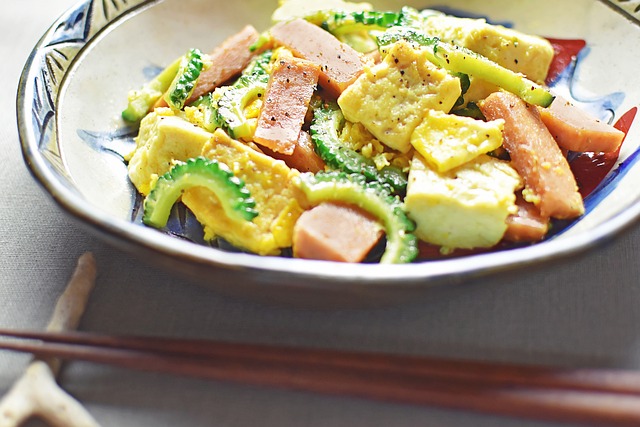
They also introduced ingredients like tofu, soy sauce, and noodles, which are commonly used in Okinawan dishes. The Chinese influence is particularly evident in Okinawan stir-fried dishes like champuru, which features a variety of ingredients mixed together to create a flavorful and satisfying meal.
Japanese Influence: As Okinawa is part of Japan, Japanese culinary traditions also play a vital role in the island’s cuisine. However, Okinawan cuisine differs from traditional Japanese cuisine in several ways. Okinawan dishes often make use of strong flavors and unique ingredients that distinguish them from mainland Japan cuisine. For example, the use of Okinawan sweet potatoes, which are naturally sweet and vibrant purple in color, is a distinctive feature of many Okinawan dishes.
Introduction to Key Ingredients and Flavors
Okinawan Sweet Potatoes: Okinawan sweet potatoes are a staple ingredient in Okinawan cuisine and are used in various dishes, including dessert. These sweet potatoes have a vibrant purple color and a slightly sweeter taste compared to regular sweet potatoes. They are rich in nutrients and antioxidants, making them a healthy and delicious addition to Okinawan meals.
Goya (Bitter Melon): Another unique ingredient in Okinawan cuisine is goya, also known as bitter melon. Goya has a distinct bitter flavor and is often used in stir-fried dishes and pickles. Despite its bitterness, goya is believed to have numerous health benefits and is a popular ingredient among the Okinawan people.
Sea Grapes: Sea grapes, also known as umibudo, are a type of seaweed that is native to Okinawa. These small, round green seaweed balls have a refreshing and slightly salty taste. They are often enjoyed as a trendy delicacy or used as a garnish in various Okinawan dishes, adding a unique texture and flavor.
Popular Dishes in Okinawa
Okinawan cuisine offers a diverse range of delectable dishes that are sure to captivate your taste buds. Some of the most popular ones are:
Goya Champuru
This iconic Okinawan stir-fry dish is a favorite among locals and tourists alike. It combines bitter melon (goya) with tofu, pork, egg, and various vegetables. The distinct bitter flavor of the goya is balanced by the savory elements, creating a harmonious blend of tastes. Goya Champuru not only showcases the Chinese influence on Okinawan cuisine but also highlights the island’s focus on using fresh, locally grown ingredients.
Rafute
If you’re a pork lover, then Rafute should be on your must-try list in Okinawa. This mouthwatering dish consists of braised pork belly simmered in a sweet and savory sauce made from soy sauce, sugar, and Okinawan black sugar. The slow cooking process tenderizes the meat and allows the flavors to meld together, resulting in a succulent, melt-in-your-mouth experience. Rafute is often served with a side of steamed rice and pickled vegetables, making it a quintessential Okinawan comfort food.
Soki Soba
Soki Soba is a traditional Okinawan noodle dish that showcases the island’s love for both flavorsome broth and handmade noodles. This delectable bowl of goodness features wheat noodles in a rich pork bone broth, topped with tender pieces of pork rib, scallions, and red ginger.
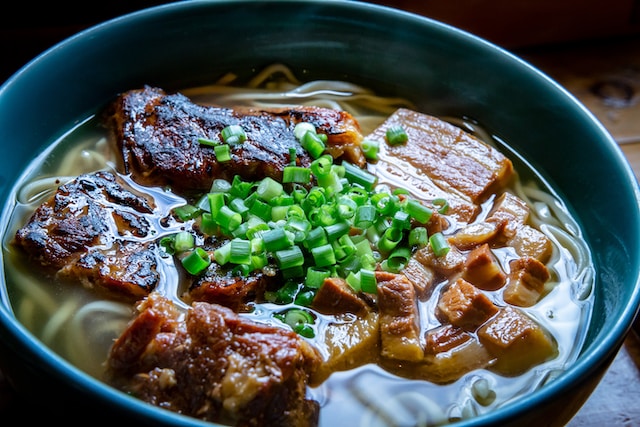
The broth is the star of the show, simmered for hours to extract the flavors of the pork bones and create a savory, umami-packed soup. Soki Soba is one of the most beloved comfort foods in Okinawa and embodies the island’s passion for savoring every spoonful of goodness.
Taco Rice
A delightful fusion dish that perfectly encapsulates Okinawa’s cultural diversity, Taco Rice combines elements of Mexican and Japanese cuisines in a unique and flavorful way. This dish features a base of steamed rice topped with seasoned ground beef, lettuce, tomatoes, cheese, and salsa, all served together in a bowl. Taco Rice is a prime example of Okinawa’s adaptation of foreign flavors, creating a dish that is now a staple in the island’s culinary repertoire.
Miso Soup with Mozuku
Mozuku, a type of seaweed found in Okinawa’s coastal waters, takes center stage in this hearty and nutritious miso soup. The seaweed adds a crunchy texture and a mild oceanic flavor to the soup, complementing the umami-rich miso broth. This simple yet satisfying soup showcases Okinawa’s connection to the sea and the abundant marine resources that play a significant role in the local cuisine.
Okinawan Sushi
Okinawan sushi, also known as nigiri-zushi, is a unique take on the classic Japanese dish. It features a combination of fresh, local ingredients such as tuna, shrimp, and sea grapes, placed on bite-sized portions of vinegared rice. The result is a burst of flavors and textures that embody the essence of Okinawa’s coastal bounty.
Sata Andagi
Sata Andagi is a mouthwatering Okinawan treat that resembles a deep-fried doughnut. Made from a simple batter of flour, sugar, eggs, and baking powder, these golden delights are crispy on the outside and fluffy on the inside. Sata Andagi is often enjoyed as a snack or dessert, and its popularity has made it a symbol of Okinawan hospitality.
Mimiga
Mimiga, or pig’s ears, may sound unusual, but they are a beloved delicacy in Okinawa. These tender and flavorful morsels are marinated, braised, and then stir-fried to perfection, creating a dish that is both crispy and succulent. Mimiga is typically seasoned with garlic, ginger, soy sauce, and vinegar, resulting in a unique taste that showcases the island’s culinary creativity.
Jimami Tofu
Jimami Tofu is a popular dish that highlights Okinawa’s love for tofu and peanuts. Made from crushed peanut milk and kanten (a natural gelatin derived from seaweed), this silky tofu dessert is light, creamy, and subtly sweet. Jimami Tofu is often garnished with toasted peanuts or a drizzle of kuromitsu (brown sugar syrup), adding an extra layer of indulgence to this delectable treat.
Umi Budo Tempura
Umi Budo, or sea grapes, are succulent green seaweed balls that have a refreshing and slightly salty taste. In this unique twist on tempura, the sea grapes are lightly battered and deep-fried, resulting in a delightful explosion of flavors and textures. Umi Budo Tempura is a popular appetizer in Okinawa, and each bite transports you to the island’s pristine, sun-kissed shores.
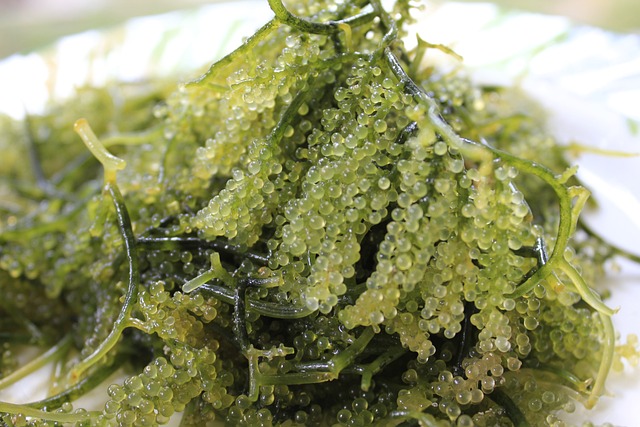
Beni Imo Tart
Beni Imo, or Okinawan purple sweet potatoes, are a beloved ingredient in Okinawan cuisine. In this delightful dessert, the vibrant purple sweet potatoes are transformed into a velvety filling, nestled in a buttery tart shell. The natural sweetness and smooth texture of the Beni Imo create a heavenly pairing, making this tart a true Okinawan indulgence.
Asa Tamago
Asa Tamago, or Okinawan-style scrambled eggs, is a simple yet flavorful dish that showcases the island’s unique culinary flair. In this dish, eggs are gently scrambled with sliced onions and wrapped in a sheet of seaweed, creating a delightful combination of savory and umami flavors. Asa Tamago is often enjoyed as a breakfast or lunch dish and is a comforting taste of Okinawa’s local flavors.
Where to Find Okinawan Cuisine
If you’re eager to embark on a culinary adventure and indulge in authentic Okinawan cuisine, there are several places where you can satisfy your taste buds and experience the vibrant flavors of this enchanting island.
Local Restaurants
Okinawa is home to a myriad of restaurants that specialize in traditional Okinawan dishes. From small, family-run eateries to larger establishments, you’ll find a wide range of options to suit your preferences. Be sure to try classic dishes like Rafute, Soki Soba, and Goya Champuru for a true taste of Okinawan culinary delights.
Izakayas and Bars
To truly experience the local food culture, visit an izakaya, a traditional Japanese pub. Many izakayas in Okinawa offer an array of Okinawan specialty dishes alongside a wide selection of drinks, including local awamori, a traditional Okinawan distilled spirit. Enjoy the lively atmosphere, friendly conversations, and authentic Okinawan flavors as you dine and drink with the locals.
Makishi Public Market
Located in Naha, the capital of Okinawa, the Makishi Public Market is a bustling hub of food stalls and vendors selling fresh produce, fish, and local snacks. Here, you can immerse yourself in the lively atmosphere and sample a variety of Okinawan street food, such as Sata Andagi, Jimami Tofu, and Umi Budo Tempura. It’s the perfect place to experience the vibrant flavors and diversity of Okinawan cuisine.
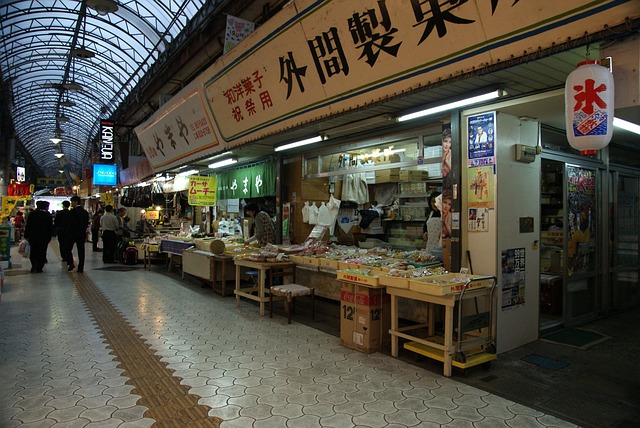
Food Festivals and Events
Okinawa hosts various food festivals and events throughout the year, showcasing the island’s unique culinary heritage. These events offer a fantastic opportunity to sample a wide range of Okinawan dishes all in one place. From the Okinawa Zento Eisa Matsuri, a lively festival celebrating traditional Okinawan dance and music, to the Naha Soba Festival, dedicated to showcasing different styles of Okinawan soba noodles, there is always a food event happening in Okinawa that is worth exploring.
Cooking Classes
For those who want to delve deeper into the world of Okinawan cuisine, taking a cooking class can be an excellent way to learn the secrets behind preparing traditional dishes. Many cooking schools and local establishments offer classes where you can learn the techniques and flavors that make Okinawan cuisine so special. It’s a hands-on experience that provides not only a delicious meal but also a deeper appreciation for the Okinawan culinary traditions.
In Okinawa, every bite is an opportunity to discover the rich history, vibrant culture, and unique flavors that make this island a true culinary gem. Whether you explore local restaurants, wander through bustling markets, or partake in cooking classes, Okinawa is sure to leave an indelible mark on your taste buds and ignite a lifelong love affair with its exquisite cuisine.

